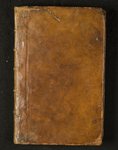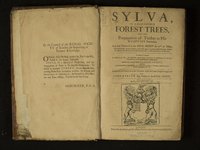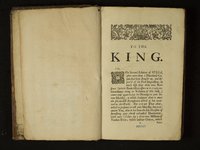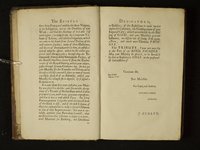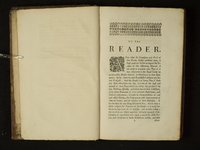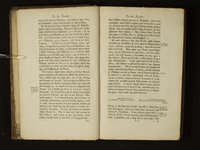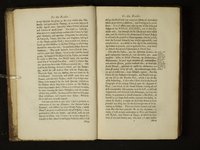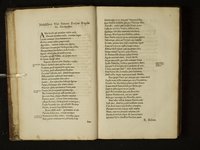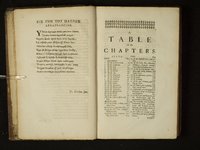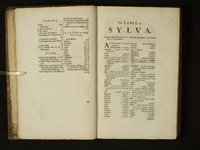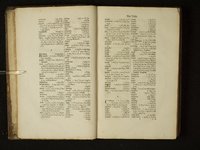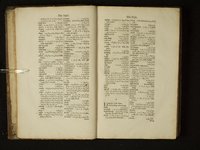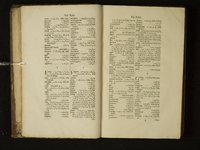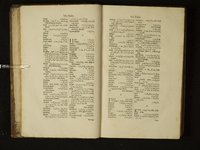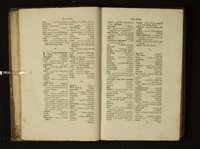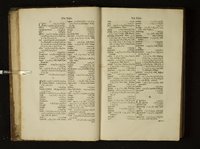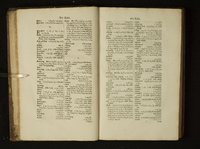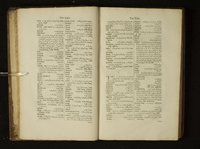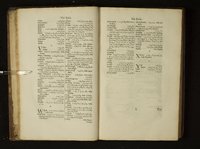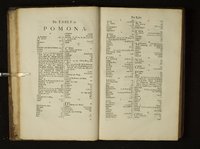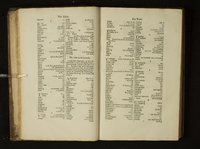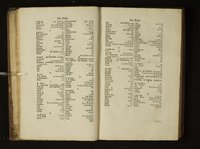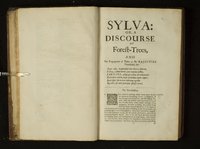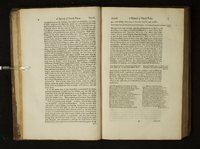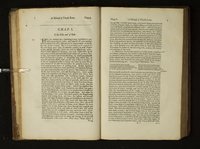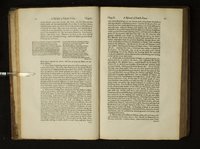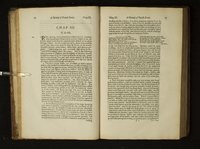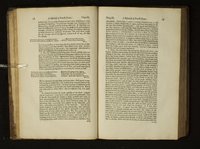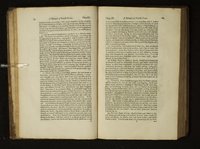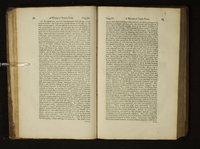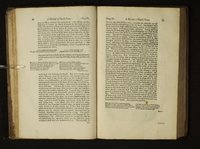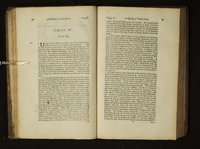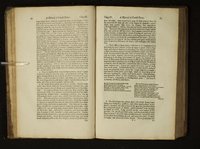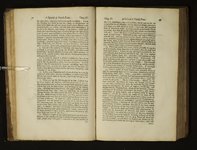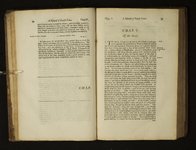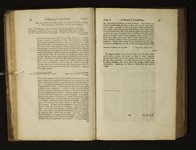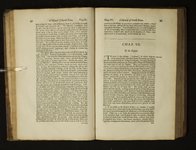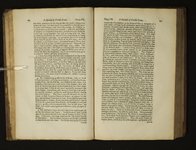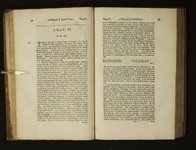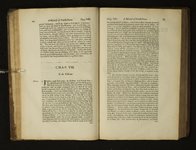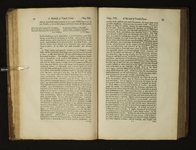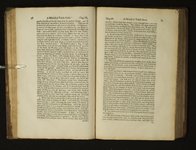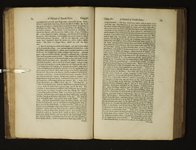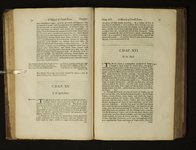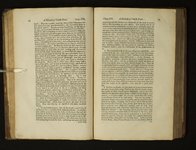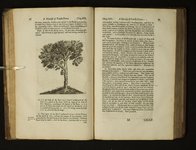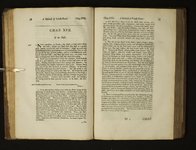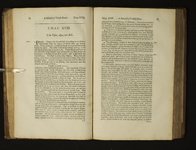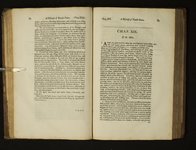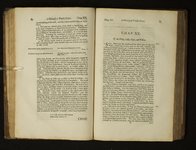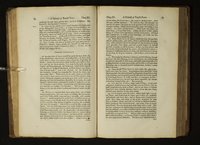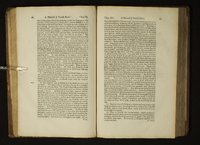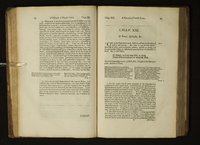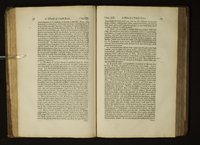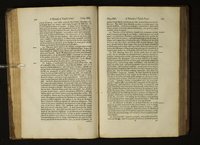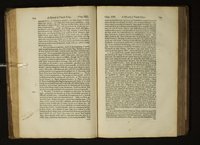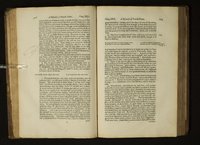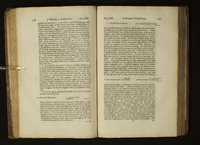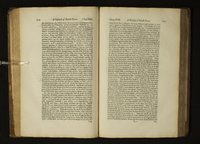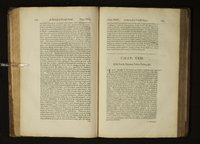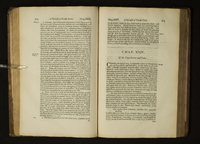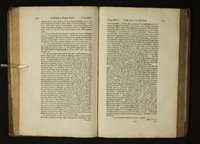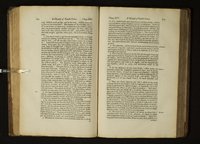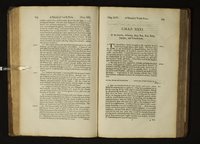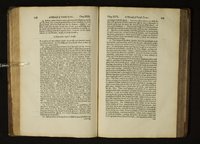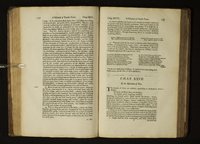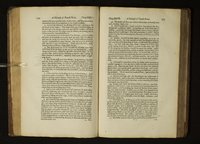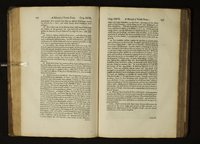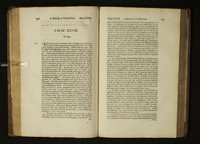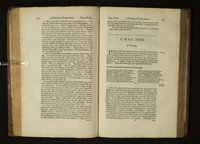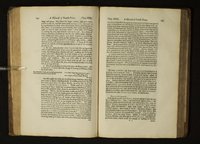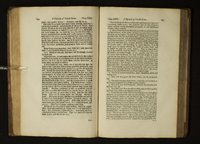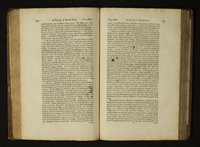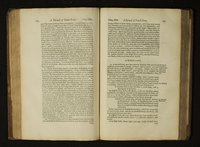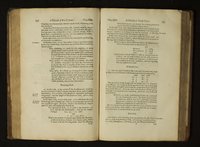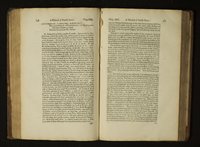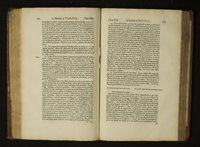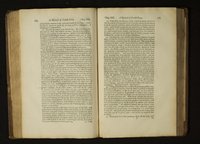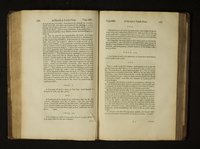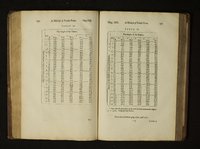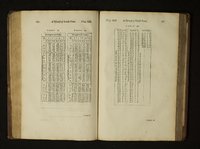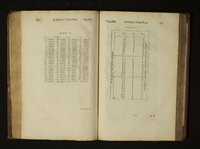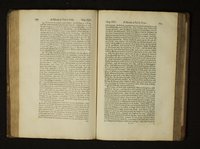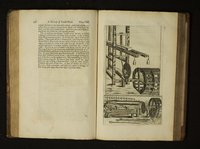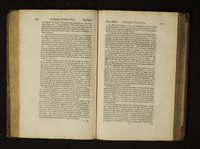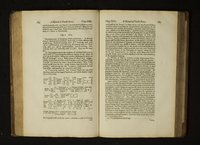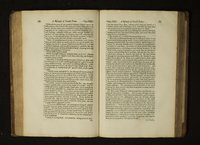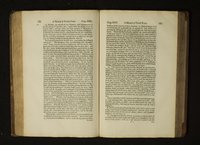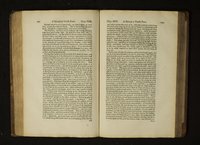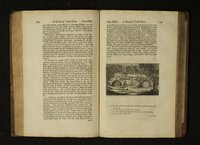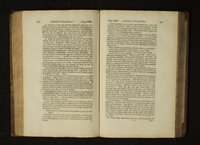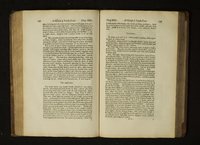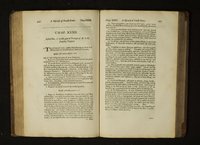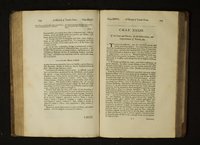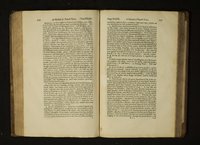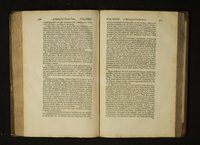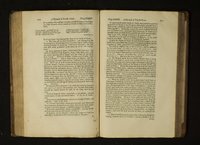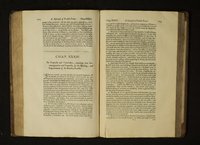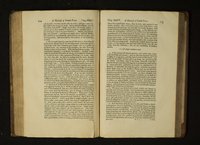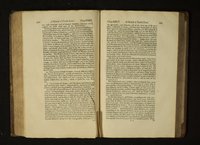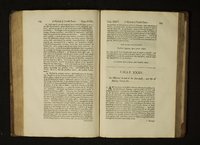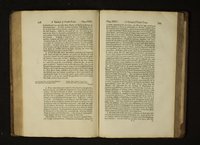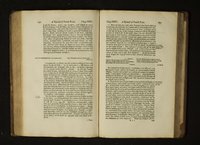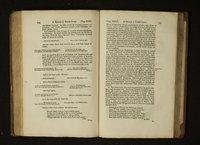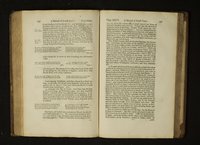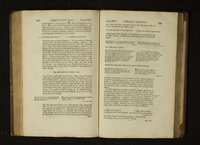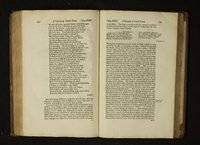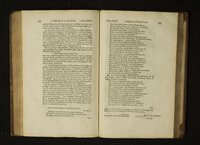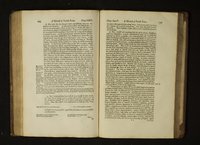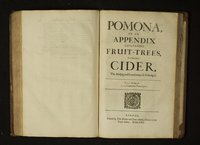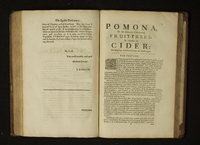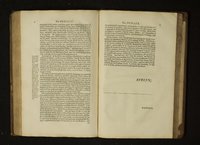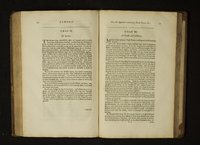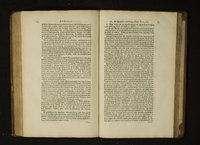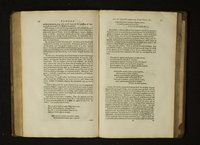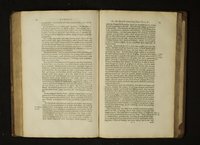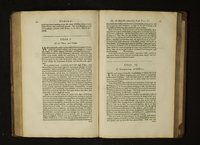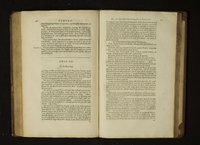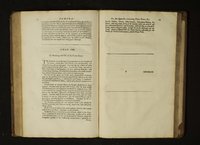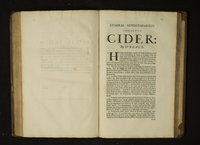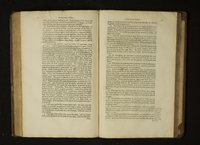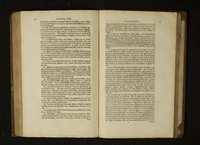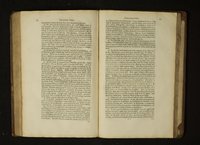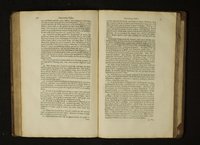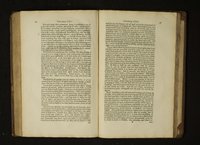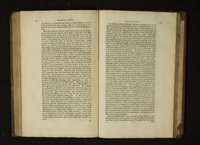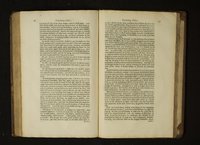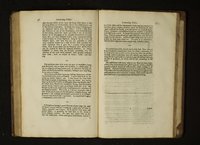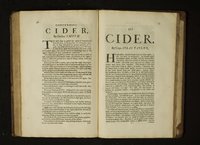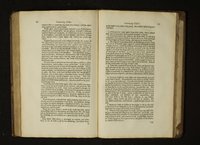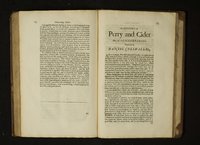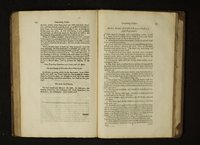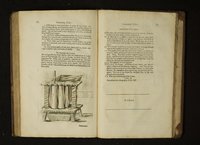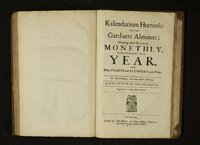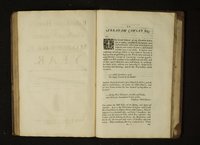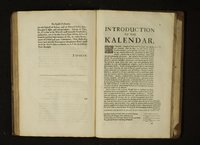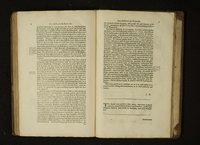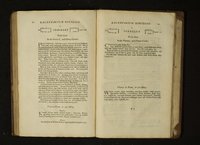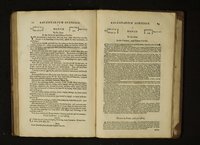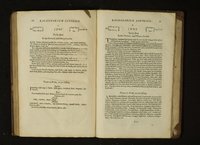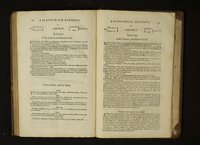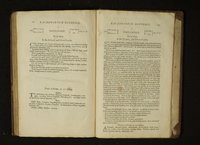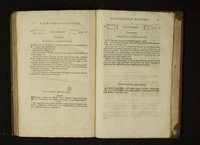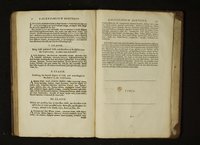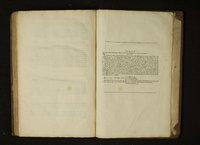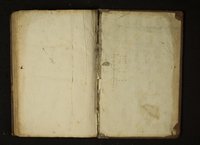| OCR Text |
Show A Difcourfe of Foreft-Trees. Chap.XXXI. ‘ Firft, all the parts of the petrif'd fubftance feem’d notatall “ diflocated,oralter’d from theirnatural pofition whiles they were “* woods but the whole pieceretain’d the exact fhape of wood,hav. “ing many of the confpicuouspores of wood ftill remaining pores, “‘and fhewing a manifeft difference vifible enough between the ‘“ grain of the wood andthatof the bark; efpecially, when anyfide ** of it was cut fmooth andpolite; for then it appeared to have a “very lovely grain, like that of fome curiousclofe mood. “Next (it refembled wood ) in that all the fmaller and (if fo 1 * maycall thofe which are onely to be feen by a good glafle ) mi* crofcopical poresof it, appear ( both when the fubftance iscut and * polith'd tranfverfly, and parallel tothe pores) perfectly like the * Micrefcopical pores of feveral kinds of wood, retaining both the *¢ fhape, and pofition of fuch pores, “It wasdiffering from wood, “*Firft, in weight, being to common water, as 33 tor. whereas “there are few of our Englifh woods that, when dry, are foundto “ be full as heavy as water. “Secondly, in hardnefe, being very near as hard as a flint, and “in fomeplaces of italio refembling the grain of a flint: it would “veryreadily cut Gla’, and would not without difficulty ( efpe“cially in fomeparts of it) be {cratch'd bya black hard flint : if oe alfo as readily {trike fire againfta Steel, as alfo againft Sa flint. “ Thirdly, inthe clofenefé ofit 5 for,though all the microfcopical ee pores of the wood werevery confpicuousin one pofition, yet by *altering that pofition of the polifh'd furface to the light , it alfo “was manifeft that thofe pores appeard darker thanthe reft of the “ body, onely becaufe they werefill’d up with a more dusky fub‘‘ ftance, and not becaufe they were hollow, “Fourthly, inthat it would not burzin the fire ; nay, though! Chap.XXxXI. A Difcourfé of Forett-Trees. °° ble, but brittle like a flint ; infomuch that with one knock of 4 ** Hammer broke off a {mall piece of it, and with the fame Have- “ mer quickly beat it to pretty fine powder upon an Anvil, “ Seventhly,it feem’d alfo very differing from mood to the touch, * feeling more cold then wood ufually does, and muchlike other “€ clofe Stones and Minerals, * The Reafons of all which Phenomena feem to be. That this petrif'd wood having lain in fome place where it wag “well foaked with petrifying mater (that is,{ucha water as is wel! “impregnated with foxy and earthy particles ). did by degrees {e“¢ parate, by feraining andfiltration, or perhaps by precipitation , “co-hafion or coagulation , abundance of ftony particles from that “permeating water, which/fony particles having, by means of the “ fluid Vehicle, convey’d themfelves not, onely into the #icrofcopi- “cal pores, and perfectly ftop’d up them; but alfo into the pores , ““which may perhaps be even in that part of the mood which “through the microfcope appears moft folid; do thereby fo aug* ment the weight of the mood, as to make it above three times *€ heavier than water, and perhapsfix times as heavy asit was when “6 wood : next, they hereby folock up and fetter the parts, of the ** wood, that thefire cannot eafily make them fly away,but the aéti“on of thefire uponthem is onely able to char thofe parts, asit “ were, like asa piece of woodif itbe clofed very faftupin Clay, ‘and kept a good while red ot in the fire,will by the heat of the “firebe char'd, and not confum'd 3 which mayperhaps be the rea* fon why thepetrifi'dfubflance appear'd of a blackifh brown col“* ourafter it had been burnt. By this intrufion of the petriffd “ particles it allo becomes hard, and friable; tor the {maller pores “ of the mood being perfectly ftuffed up with thefe flozy particles, “ the particles of the wood havefew, or no pores in which they can “ refide, and confequently, no flexion or yielding can be caus‘d in “fucha fubfiance. The remaining particles likewife of the wood ‘among the ffony particles may keep them from cracking and flying, as they doina flint, 22. The cafual finding of Subterraneows-Trees hasbeen the occafion of this curious Digreffion : Nowit were a {trange Paradox to affirm,that the Timber under theground,fhould to a great degree, equal the value of that which grows above the Ground 5 fecing though it be far/effe, yet it is far Richer, the Roots of the vilett Shrub, being betterforits toughnefe , and for Ornaments,and delicate #/es much more preferrable than the Heart of the faireft and ** kept it a good while red-hot in the flame of a Lamp , very intently caft onit bya blaff through a fmall pipe; yet it feemed not “‘atall to have diminifh'd its extenfion; but onely I found “ have chang’d its colour, and to have putona moredark, it to and ‘dusky brown Aue. Nor could I perceive that thofe parts which “feem’d to have been woodat firlt, were anything wafted, but the “ parts appear’d asfolid, and clofe as before. It was farther ob: *‘fervable alfo, that asit did not confume like wood; fo neither “ didit crack and flylike a flint, or fuch like hard ftone nor was “it long beforeit appeared red-hot. ; “ Fiftly,inits difolublenefé; for putting fome dropsof diftilled ‘Vinegar upon the fione, Vtound it prefently to yield very many “ bubbles, jult like thofe which may be oblerved in /pirit of Vines “gar whenit in late and former Ages been ftately Groves and Woods, have yet this Trea/ure remaining, and perchance fownd and unperifhd, and commonly ( as we obferv'd) anhinderance to other Plantations5 “out of thepores of this petrifi'd fubftance, by the infinuating |i- Engines therefore, and Expedients for the more eafily extrading thefe Cumbrances, and making 1iddanée upon fuch Occafions, be- corrodes Coral ; though I guefs many of thofe bub“bles preceeded frcm the {mal] parcels of Air, which were driven “guid menfirnna, “ Sixtly, in its Kigidneff , and friability ; being notat all frexible, foundeft Tree : And many Hills, and other wafteeplaces, that have fides thofe we have produc’d, would be excogitated, and enquir'd after, for the dilpatch of this difficult Work. i 23. Finally, |

